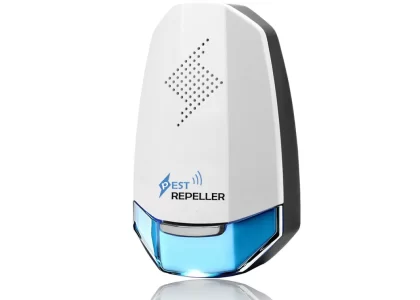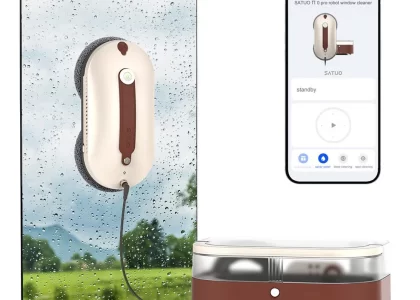 Introduction:
Introduction:
A washing machine that won’t spin can be a frustrating problem, leaving you with wet and unwashed laundry. There are several potential causes for this issue, ranging from simple problems to more complex mechanical or electrical issues. In this comprehensive guide, we will explore common reasons why a washing machine won’t spin and provide troubleshooting tips to help you identify and resolve the problem. By following these simple steps, you can get your washing machine back to spinning and ensure clean and well-dried laundry.
 Common types of washing machines:
Common types of washing machines:
There are several types of washing machines available, each with its own unique features and functions. Here are the common types of washing machines:
Top-loading washing machine:
This type of washing machine has a vertical drum and a lid on the top for loading clothes. It is a popular choice and often more affordable compared to front-loading machines. Top-loading machines can be further classified into fully automatic or semi-automatic models.
Front-loading washing machine:
Front-loading machines have a horizontal drum and a door on the front for loading clothes. They are known for their energy efficiency, water-saving features, and better cleaning performance. Front-loading machines are usually fully automatic and offer advanced features and functions.
Semi-automatic washing machine:
Semi-automatic machines are typically top-loading washers. They have separate wash and spin tubs, and users need to transfer clothes manually from one tub to another. These machines require more user intervention but are often more affordable and suitable for areas with water scarcity.
Fully automatic washing machine:
Fully automatic machines can be both top-loading or front-loading. They come with built-in sensors and automatic programs that handle the entire washing process, from water filling to drying. Users only need to select the program, and the machine takes care of the rest. Fully automatic machines provide convenience and ease of use.
Compact or portable washing machine:
Compact or portable machines are smaller in size and designed for small spaces or for those who require a portable option. They can be top-loading or front-loading and often have lower capacities. These machines are convenient for use in apartments, RVs, or small households with limited space.
High-efficiency (HE) washing machine:
High-efficiency machines are designed to use less water and energy compared to traditional models. They can be both top-loading or front-loading machines and often feature advanced technologies to optimize water and detergent consumption. HE machines are known for their efficiency and eco-friendly features.
These different types of washing machines offer various features, capacities, and technologies. Factors such as available space, budget, washing needs, and energy efficiency should be considered to select the most suitable washing machine for your requirements.
 Some potential risks associated with a washing machine that won’t spin:
Some potential risks associated with a washing machine that won’t spin:
When a washing machine fails to spin, it can indicate a problem that needs to be addressed. Here are some potential risks associated with a washing machine that won’t spin:
Poor Cleaning Performance:
The spinning action of a washing machine helps in removing excess water from the clothes and aids in the cleaning process. If the machine doesn’t spin, it may result in poor cleaning performance, leaving clothes wetter than normal and potentially not fully cleaned.
Excess Water Retention:
Without proper spinning, excessive water is retained in the clothes. This can lead to longer drying times, potential mold or mildew growth, and a musty odor in the laundry. Damp clothes can also become a breeding ground for bacteria, potentially causing hygiene and odor issues.
Damage to Clothes:
When clothes remain saturated with water due to a lack of spinning, they may become stretched, misshapen, or damaged. Delicate fabrics may become more prone to tears or increased wear. Additionally, detergent residue may not be rinsed out properly, potentially leaving behind stains or causing skin irritation.
Malfunctioning Components:
If a washing machine fails to spin, it may indicate a malfunctioning or broken component within the machine, such as the motor, belt, or clutch. Ignoring the issue or continuing to use the machine without addressing the problem can lead to further damage to these components, potentially resulting in costly repairs or even the need for a replacement machine.
It is important to troubleshoot and address the cause of the spinning issue promptly. Check if there are any obstructions or imbalances in the load, ensure the machine is level, and inspect for any visible signs of damage or malfunction. If the problem persists, it is advisable to consult a professional repair technician or contact the manufacturer for further assistance. Avoid ignoring the issue as it can lead to more significant problems and potential risks to your laundry and the machine itself.
Power and Settings
Power Supply:
Ensure that the washing machine is properly plugged into a functioning power outlet.
Check that the circuit breaker or fuse for the washing machine is not tripped or blown.
Lid or Door Switch:
Inspect the lid or door switch of your washing machine to ensure it is functioning properly.
If the switch is faulty or not engaging properly, the machine may not spin.
Cycle Selection:
Double-check that you have selected the appropriate cycle for your laundry load.
Certain cycles, such as delicate or no-spin modes, will prevent the machine from spinning.
Load Imbalance and Overloading
Load Distribution:
Distribute the laundry evenly in the washing machine drum to avoid an imbalanced load.
Unevenly distributed garments can cause the machine to become off-balance and prevent spinning.
Overloading:
Avoid overloading the washing machine with too much laundry.
Excessive weight can strain the motor and prevent the machine from spinning properly.
Drainage and Blockages
Drainage Issues:
Check if there are any drainage problems, such as a clogged drain pump or drain hose.
If water is not properly drained from the machine, it may not enter the spin cycle.
Filter and Drain Pump:
Clean or unclog the filter and check the drain pump for any obstructions.
Accumulated debris or foreign objects can hinder proper drainage and affect spinning.
 Mechanical and Electrical Problems
Mechanical and Electrical Problems
Drive Belt:
Examine the drive belt that connects the motor to the drum.
A loose or damaged belt can hinder the spinning motion.
Motor Coupling:
Inspect the motor coupling, which connects the motor and transmission.
A broken or worn-out motor coupling can result in a non-spinning washing machine.
Motor or Control Board:
Mechanical or electrical faults in the motor or control board may cause the washing machine to not spin.
In such cases, professional repair or replacement may be required.
 Conclusion:
Conclusion:
A washing machine that won’t spin can be caused by various factors, ranging from simple issues like power supply or overloading to more complex mechanical or electrical problems. By troubleshooting step by step, you can identify the cause of the issue and take appropriate action. Ensure a proper power supply, examine the lid or door switch, and check the cycle selection. Address load imbalance or overloading concerns, and inspect for drainage blockages. Assess the drive belt, motor coupling, and motor or control board for mechanical or electrical issues. By following these troubleshooting tips, you can determine the root cause and make necessary repairs or seek professional assistance if needed. With your washing machine spinning again, you can enjoy clean and freshly washed laundry without any hassle.





